Branching out: Smith, Holyoke Community College students collaborate on Holyoke forestry project
| Published: 10-29-2023 1:09 PM |
HOLYOKE — Can downtown Holyoke support a thriving forest ecosystem?
Students at Holyoke Community College and Smith College are teaming up to answer that question, tracking the growth of 94 trees in the Flats, Churchill and downtown neighborhoods that the city recently planted as part of its Urban Forest Equity Plan.
“We really wanted to understand the state of Holyoke’s urban forest canopy, do community outreach and find out what people thought about trees,” said Holyoke’s Conservation & Sustainability Director Yoni Glogower, who launched the plan in July 2021 in hopes of planting trees in parts of Holyoke that historically had none. “Training the next generation of land stewards and decision makers was a great way to apply some of the findings and lingering questions from that plan that we had.”
Thirty three HCC and Smith students are partnering with Glogower to measure the development of dozens of trees in downtown Holyoke and determine whether their roots have enough room to grow, as part of a class project HCC professor Sage Franetovich and Smith professor Jess Gersony established last year.
Gersony proposed the collaboration to Franetovich after she learned about Glogower’s work in Holyoke, which she said brings together plant science and social justice — an intersection many of her students are interested in studying.
Planting trees in residential communities improves people’s quality of life, the Forest Equity Plan says, but many low-income, urban neighborhoods have fewer trees than suburban and rural areas. Only 12% of land in the four neighborhoods the Forest Equity Plan focuses on — Churchill, Downtown, South Holyoke and the Flats — is covered by tree canopy on average, according to the 2020 Holyoke Impervious Surfaces Mitigation Plan.
A growing movement of foresters want to expand tree canopies into the city to ensure people of all backgrounds experience the benefits that trees provide, such as their ability to reduce stormwater runoff and offer shade that eases high temperatures.
Article continues after...
Yesterday's Most Read Articles
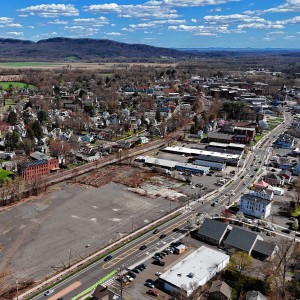 Northampton bans auto dealerships near downtown; zone change won’t affect Volvo operation on King Street
Northampton bans auto dealerships near downtown; zone change won’t affect Volvo operation on King Street
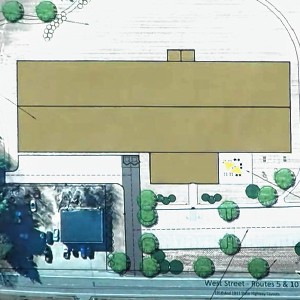 Proposed Hatfield pickleball/tennis building raising eyebrows
Proposed Hatfield pickleball/tennis building raising eyebrows
 South Hadley man killed in I-91 crash
South Hadley man killed in I-91 crash
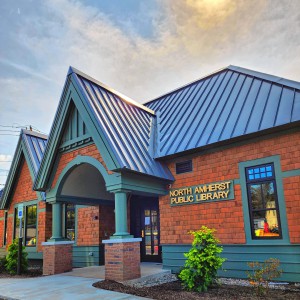 ‘Home away from home’: North Amherst Library officially dedicated, as anonymous donor of $1.7M revealed
‘Home away from home’: North Amherst Library officially dedicated, as anonymous donor of $1.7M revealed
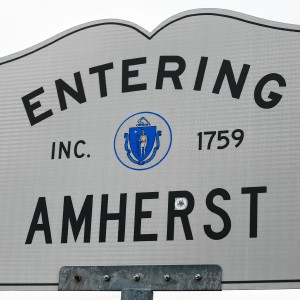 Police respond to alcohol-fueled incidents in Amherst
Police respond to alcohol-fueled incidents in Amherst
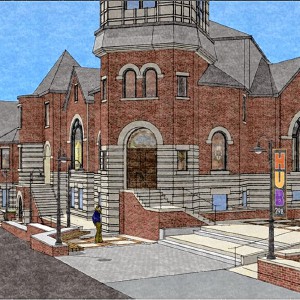 Public gets a look at progress on Northampton Resilience Hub
Public gets a look at progress on Northampton Resilience Hub
“We know that summers are getting hotter, and in cities that have few trees, they’re getting disproportionately hotter,” Franetovich said. “The more trees we have, the more canopy cover there is and the less heat will radiate up off the pavement.”
Barbara Ann Santiago is a student in Franetovich’s class and grew up on Elm Street, one of the streets where the city recently planted trees. She recalled playing on the pavement or in nearby sandpits during her childhood, but without many trees to shade the street against the sun, every summer was “so hot.”
“To come back now — five years later because I moved out — and see the trees that were planted here, it’s just an amazing thing,” Santiago said. “I want this for Holyoke.”
Seeing few trees in downtown Holyoke compared to the large tree canopy that covers Smith’s campus surprised some of Gersony’s students.
“You are immediately struck by the ratio of street trees,” said Chlo Gold, a junior enrolled in Gersony’s class. “This is not how we’re meant to live.”
Franetovich and Gersony’s students have yet to meet in person, but the professors say they hope to continue collaborating as the trees mature, identifying new ways to integrate their classes. Depending on what data their students collect, Gersony said this project could feed into an academic publication, noting that “a lot of communities have the same challenges and questions” about planting trees in an urban environment.
Glogower may have found some of the answers, thanks to a grant from the Massachusetts Municipal Vulnerability Preparedness program that funded the development of his Urban Forest Equity Plan. The Department of Conservation & Recreation’s Greening the Gateway Cities Program then planted all the trees at no cost to the city. DCR even continues to water the trees for two years until their roots get established.
As far as Gersony is concerned, the trees will be the gift that keeps giving in Holyoke.
“These trees are providing a lot of services,” said Gersony, after meeting with the HCC cohort alongside Franetovich and Glogower. “We’re all serving each other.”

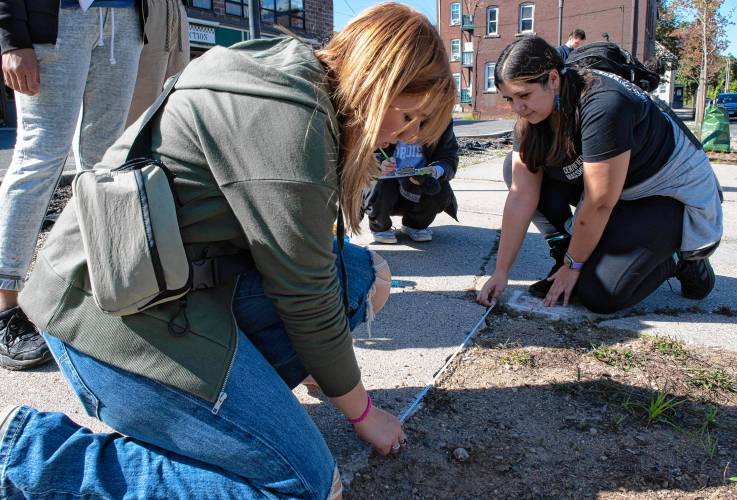
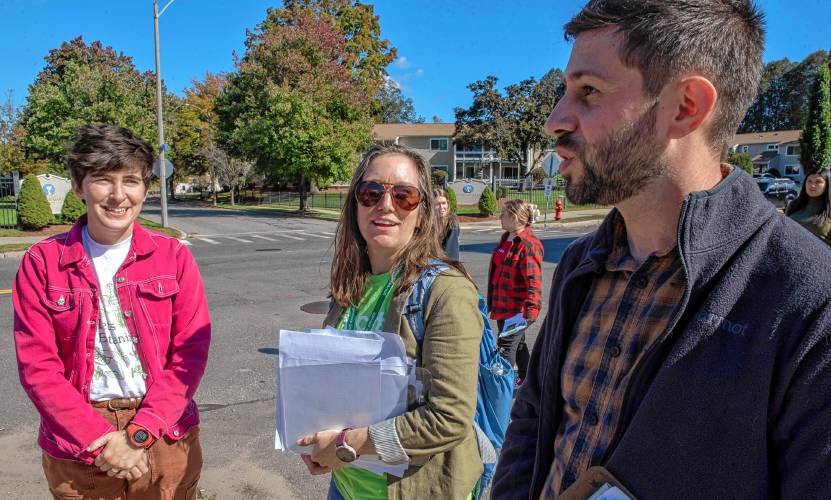
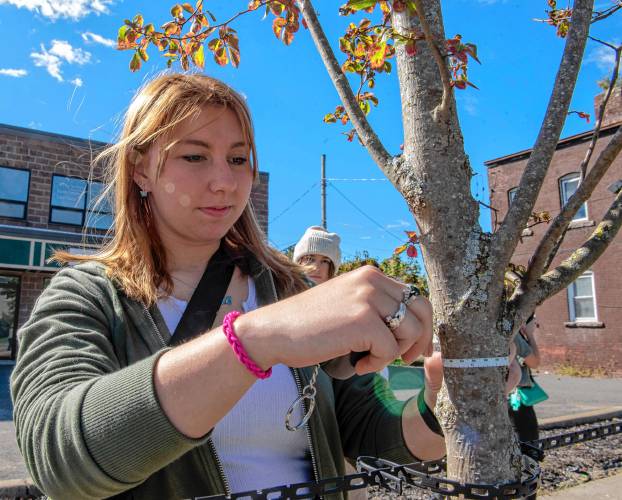
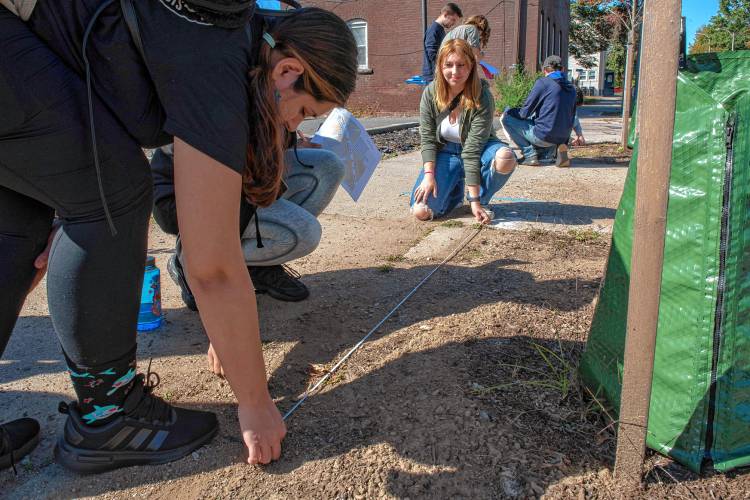
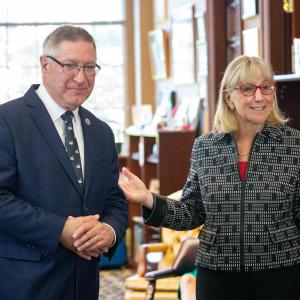 State Senate budget funds free community college for all
State Senate budget funds free community college for all ‘We can just be who we are’: Thousands show support for LGBTQ community at Hampshire Pride
‘We can just be who we are’: Thousands show support for LGBTQ community at Hampshire Pride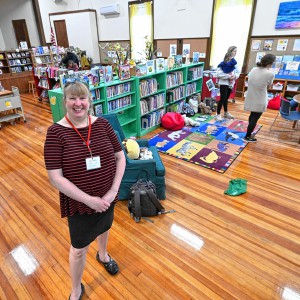 Doors open at Tilton Library’s temporary home at South Deerfield Congregational Church
Doors open at Tilton Library’s temporary home at South Deerfield Congregational Church Area property deed transfers, May 2
Area property deed transfers, May 2
